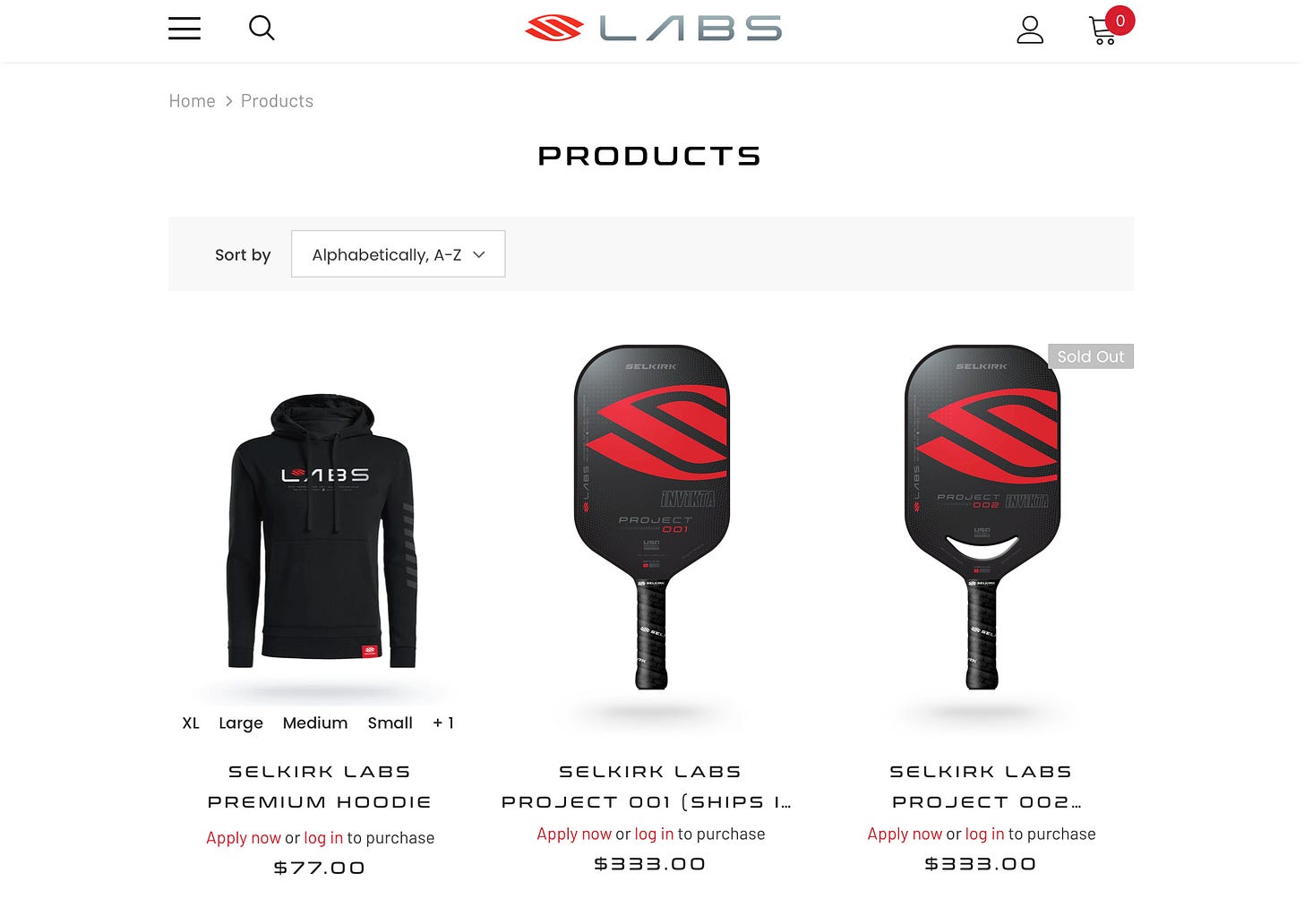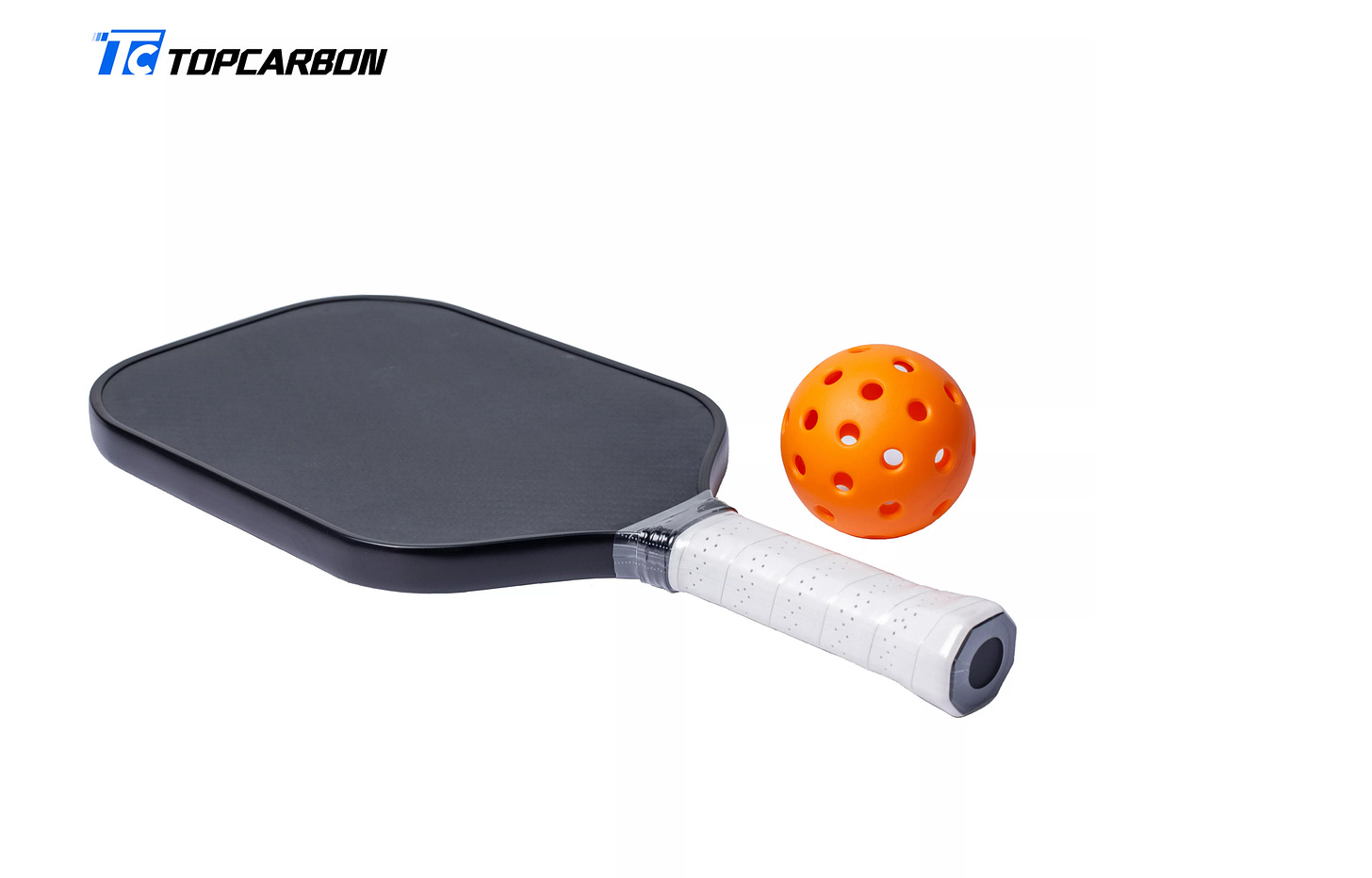On February 22, Selkirk Labs came out with two new paddles that cost a stomach-lurching $333. One of them, Project 002, is the smiley-face throat hole paddle that’s been in the hands of Tyson McGuffin over the last few months. (Part of that value comes from the $88 “collector’s case” which, if it’s like the other Selkirk case, is probably made of embossed polyurethane, the kind of material used in Ghanel and Cucci bags sold in Santee Alley.)
To buy one of these hole-y paddles, you have to “apply” to be a member of Selkirk Labs (though it seems that everyone is accepted). Once you’re in, you also get to provide Selkirk advice (read: free market research) on how you would improve their designs.
If you want one, you’ll have to wait—they’re sold out until April.
I like Selkirk paddles for their soft feel and build quality, but $333 is too rich for my blood—especially since many paddles need to be replaced after a year or so of constant play. Here’s why I think it’s better to wait.
What you’re paying for
I’m still not sure why paddles are so expensive. They don’t look very complicated or high-tech. Reddit user u/dsgfarts shared a video showing how Selkirk used to make paddles six years ago, and it doesn’t looks like much. There’s a piece of corrugated plastic, two “decal” faces, an edge guard, some hard foam for the handle, and a grip.
And as with most products, you can go to Alibaba to find hundreds of results for pickleball paddles that cost between $5-$30 (sometimes with really low minimum purchase orders). These paddles have the features touted by all the big makers: polypropylene honeycomb, Nomex, carbon fiber faces, etc.
I’d like to see how a TopCarbon-made carbon fiber polypropylene 16mm core paddle that costs $32 per piece on Alibaba compares to a Crbn 1 (my current paddle), which retails for $180.
Not all paddles are Alibaba-ready models with screenprinted branding. Pickleball Effect recently did an interview with Chuck Vietmeier, Director of Product Marketing from Gamma Sports, who went into the differences between a $50 paddle and a $200 paddle. Vietmeier says it comes down to materials used and the ability to design components to spec.
Even better, this (very long) Better Pickleball video with Gearbox CEO Rafael Filippini explains the patented molding process for their thin, edgeless carbon fiber paddles, complete with cross sections and carbon fiber material demos. Filippini makes a good case for why Gearbox paddles are worth the extra money. In theory, you don’t have to worry about the dead spot death rattle of bits of broken plastic honeycomb inside.
The thing with these new Selkirk Labs paddles is that I can’t tell what makes them worth $150 more than my current (expensive) paddle. “GreenTec Polypropylene Core” still means it’s a plastic core. “ProSpin+ Surface” coating still sounds like grit paint.
I also wouldn’t buy a paddle I’ve never touched. I’ve spent many an afternoon dorking out at the The Pickleball Exchange here in L.A., where they have a half-court in store so you can play-test and compare pretty much every available paddle with a salesperson who will expertly return your shots while explaining the paddles’ differences. (This is not an ad; I truly love it there.) If you’re not in L.A., you can try the Total Pickleball demo program or take advantage of PickleballCentral’s great 30-day paddle return policy.
And in case you missed this in the fine print for Selkirk Labs:
Unless otherwise stated, all Labs Projects come with a 1-year manufacturer defect warranty. Because of the nature of Labs Projects being research & development/concept paddles, we are unable to offer a lifetime warranty.
No more lifetime warranty! That was a big selling point for Selkirk paddles for me.
Perhaps the real value is in belonging to Selkirk’s insiders’ club. Me, I’d rather let all the excited Labs members test the paddles, then try the ones that get released to the regular, lifetime-warrantied Selkirk line.
Remember, Ben Johns recently won triple crown championship golds at the PPA Arizona Grand Slam playing with his namesake (heavily modded) $100 paddle. As they say, it’s often the wizard, not the wand.
Elsewhere in pickleball news
U mad? Pickleball is too noisy for some people, says the LA Times. As an enthusiast, I love the sound, but I sympathize with people who live within an audible distance to courts. I have also come to prefer the sound of softer, thicker paddles like the Selkirk Vanguard hybrid to Nomex core paddles like the high-pitched Onix Z5.
Don’t miss Anna Bright’s debut at the APP Punta Gorda Open. Holy moly. She was a college tennis player at Cal, and she and partner Jorja Johnson played with fire and brimstone. I admire how aggressively Bright and Johnson were able to push their opponents back on almost every point. It’s not my style of play, but if this is the where the sport is going, I’m going to have to learn how to counter those tennis drives and whips better. (P.S. Dear APP, get a copy editor for your lower thirds.)
The news-news is making me anxious, too. I am no scholar of war, so I have no substantive comment to add to the discourse. I am grateful pickleball helps me avoid screens, move my body, and clear my mind for a few hours. Hope to see you on the courts.



